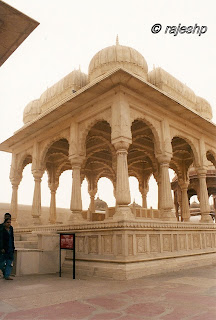
Ever since
Silversea's new 132-passenger expedition ship,
Prince Albert II, was launched earlier this year, fans of the cruise line have been anticipating details about the ship's upcoming visits to the South Pacific from mid-March to late October 2009.
The itineraries have been released and there are some outstanding options that include lesser known ports of call in the Austral Islands, the Marquesas, and the isolated Tuamotu Islands. Perhaps the best news is that these Polynesian cruises will follow only a loose itinerary, allowing for the flexibility to stay longer at one location or make a slight detour due to weather conditions.
The following itinerary descriptions were provided by Silversea:
Austral Island Adventures
Nestled in the Tropic of Capricorn, the remote Austral Islands lie hundreds of miles south of Tahiti and enjoy a slightly cooler climate. Tubuai, largest of these volcanic islands, is probably best known for the failed landing attempts of the H.M.S. Bounty. (The island's villagers assaulted the unwelcome ship with a barrage of stones, and ultimately the mutineers sailed off to Pitcairn.) Prince Albert II and her fleet of eight Zodiac boats will explore the unique culture, flora and fauna of Rapa, Raivavae, Tubuai, Rurutu, and Rimatara on five 11-day, roundtrip journeys from Papeete.
Silver Sailing fares start at $3,897 per person, based on double occupancy.
Journeys to the Marquesas
The mountainous islands of the Marquesas are located nearly 900 miles northeast of Tahiti and just south of the equator. With a lush, vibrant terrain bursting with myriad exotic flowers and fruit trees, it's easy to understand how this tropical paradise captivated the artist Paul Gauguin, who made the Marquesas his adopted home. On four roundtrip journeys of 14 days from Papeete, Prince Albert II's expedition team will lead in-depth explorations of Fatu Hiva, Pua Mau, Hiva Oa, Atuona, Ua Pou, Nuku Hiva, and Tahuata, as well as Manihi and Fakarava Island in the Tuamotu Archipelago and the Society Islands of Bora Bora and Tahaa.
Silver Sailing fares start at $4,917 per person, based on double occupancy.
Tuomotu Expeditions
The isolated Tuamotu Islands, northeast of Tahiti, comprise the world's largest chain of atolls. Its 78 sparsely populated coral islands span over 900 miles of aquamarine waters. Dotted with quaint villages, coral churches and an abundance of wildlife—from bottlenose dolphins and coconut crabs to the rarest of birds, this remote archipelago offers endless possibilities for real Robinson Crusoe-style adventures. Departing from Papeete, Prince Albert II will embark on five 10-day expeditions to the Tuamotu islands of Tikihau, Rangiroa, Apataki, Arutua and Fakarava, as well as Raiatea, Maupihaa, and Huahine in the Society Islands.
Silver Sailing fares start at $3,597 per person, based on double occupancy.
The
Prince Albert II is a luxury expedition ship offering an all-inclusive experience featuring spacious staterooms (many with French balconies or full verandahs) and a crew-to-guest ratio of 1:1.
For more information about
Prince Albert II, talk with your travel agent or visit Silversea's
website.
Photos courtesy of Silversea.
 Eight Kilometers east of Bikaner, this is the site of royal chatris of many of the Bika dynasty rulers. The royal crematorium has several exquisite cenotaphs (Chatris). Each Chatri is dedicated to the memory of rulers of Bikaji dynasty and is situated on the exact place where they were cremated.
Eight Kilometers east of Bikaner, this is the site of royal chatris of many of the Bika dynasty rulers. The royal crematorium has several exquisite cenotaphs (Chatris). Each Chatri is dedicated to the memory of rulers of Bikaji dynasty and is situated on the exact place where they were cremated. 



